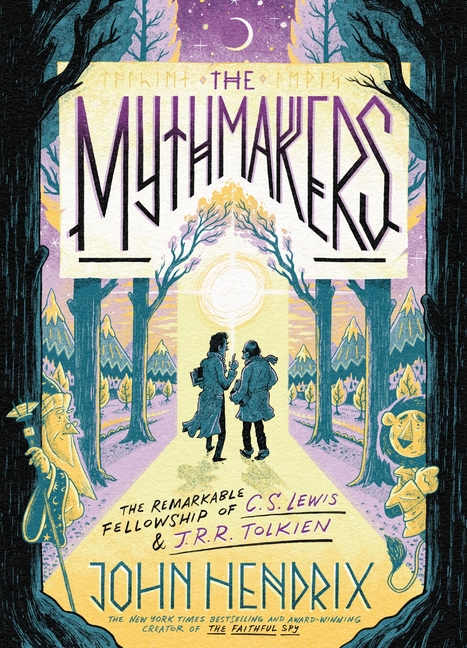Book Description
for The Mythmakers by John Hendrix
From Cooperative Children's Book Center (CCBC)
A fascinating look at the friendship between C.S. Lewis and J.R.R. Tolkien is also an ambitious exploration of the intersection of intellect, imagination, and faith in their lives. This graphic novel introduces the anthropomorphic Mr. Lion and Mr. Wizard as guides; they begin with an explanation of mythology and its related forms. The narrative then turns to the two men, recounting each of their childhoods and early adulthoods. Lewis and Tolkien met after World War I at Oxford, connecting first over shared love of mythology. Tolkien, a devout Catholic, found the integration of faith and myth seamless, while Lewis, a former Protestant who came out of the war an atheist, did not. But their deep, ongoing discussions led to a series of revelations for Lewis; Tolkien’s belief in myth-making and storytelling as human expressions of the divine led Lewis back to Christianity. If not for Lewis’s encouragement at key points, Tolkien, a perfectionist, might never have finished writing The Lord of the Rings; while Lewis’s integration of faith and creativity was the wellspring of much of his work. Dynamics within the Inklings, their critique and discussion group contributed to their eventual rift, a bittersweet endnote to each man’s success. Each remained an admirer of the other while mourning the loss of the closeness they once had. Teens (and adults) who are fans of their works will find much to appreciate in this rich exploration of their individual creativity and shared friendship.
CCBC Choices 2025. © Cooperative Children's Book Center, Univ. of Wisconsin – Madison, 2025. Used with permission.


